What Is Energy?
Student Guide


Conclusion
Draw a picture and use words to explain what happened.



Draw a picture and use words to explain what happened.
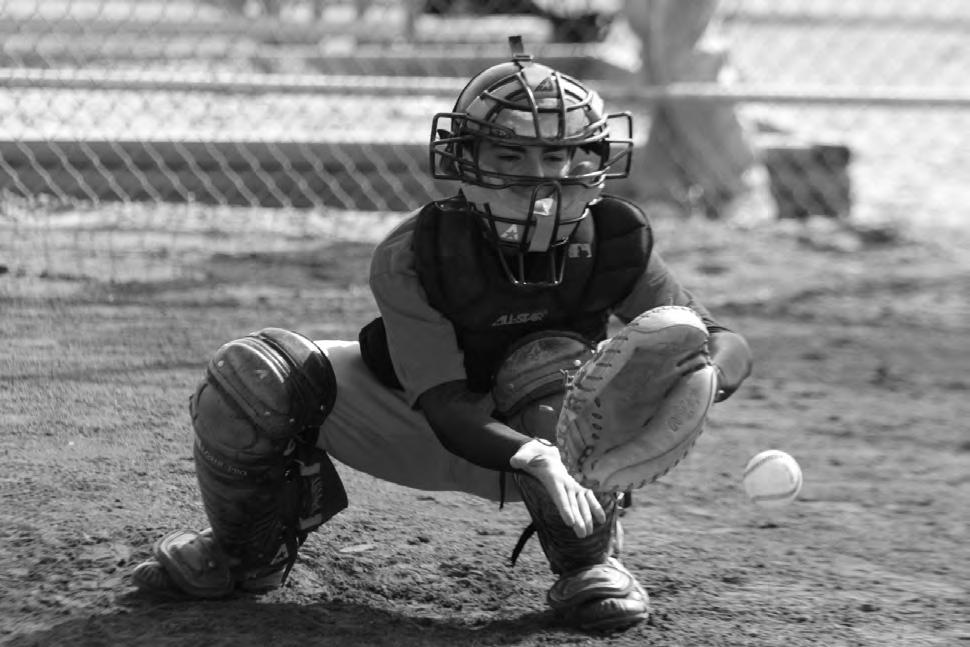

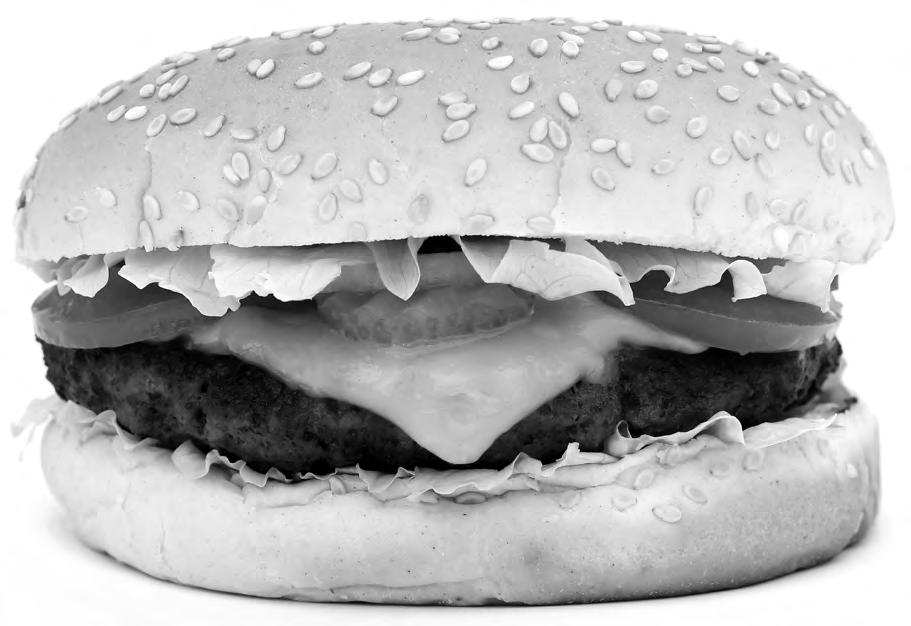


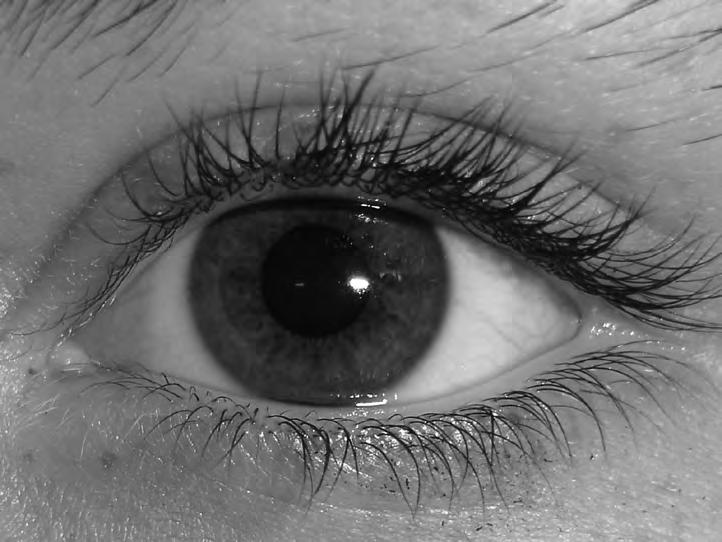
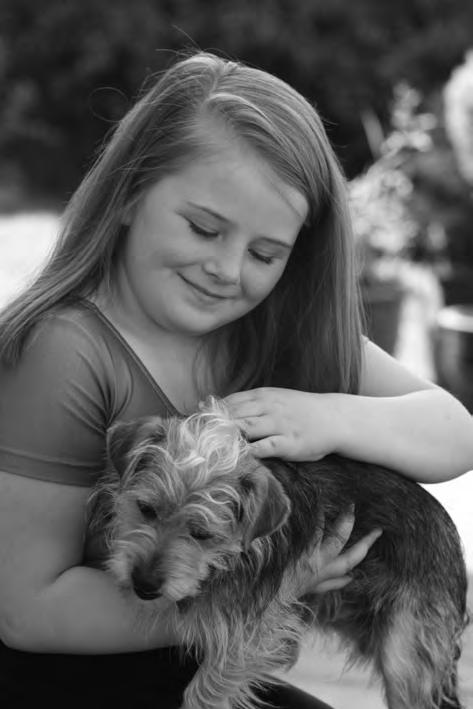
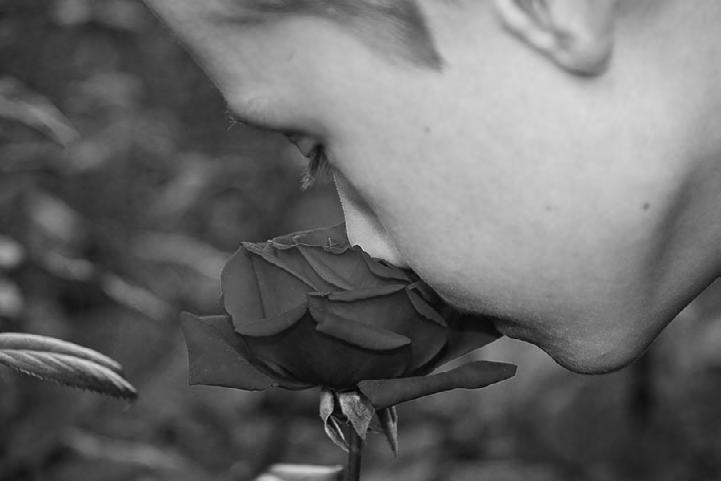
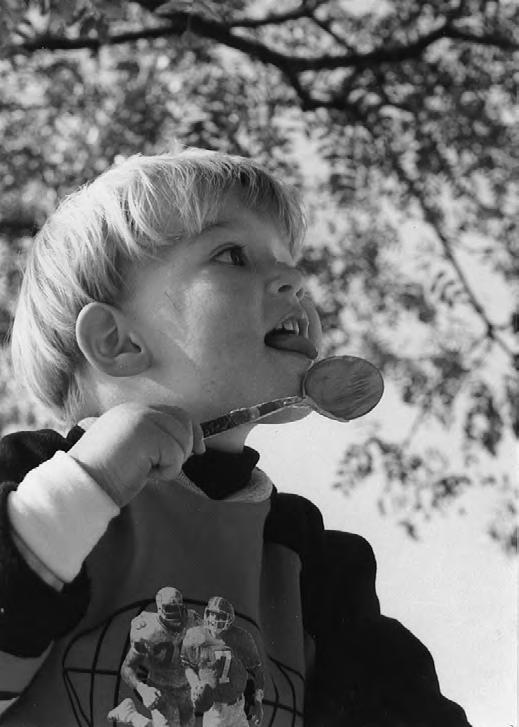

1. Hold each of the spheres in your hands. Which one feels the heaviest? In the PREDICTION column on the left, number the spheres from 1 to 4, with 1 being the heaviest.
2. Weigh each sphere and record the mass in the square on the balance.
3. In the RESULTS column, use your data to re-number the spheres from 1 to 4, with 1 as the heaviest.
4. Compare your predictions to the results. How well did you do?
Question: Which sphere will bounce the highest?
1. Hold the ruler up straight.
2. Drop each sphere 3 times from the top of the ruler and measure how high it bounces in inches and centimeters.
3. Record your results.
ATrial 1 inches centimeters
Trial 2 inches centimeters
Trial 3 inches centimeters
C
Trial 1 inches centimeters
Trial 2 inches centimeters
Trial 3 inches centimeters
B
Trial 1 inches centimeters
Trial 2 inches centimeters
Trial 3 inches centimeters
D
Trial 1 inches centimeters
Trial 2 inches centimeters
Trial 3 inches centimeters
Question: Which sphere makes the loudest sound when dropped?
1. Drop each sphere from the same distance and listen to the sound it makes. What do you notice?
1. Graph your data from the bouncing investigation.

Bounce - Sphere A
Bounce - Sphere B

Bounce - Sphere C
Bounce - Sphere D
1. Graph your data from the rolling investigation.
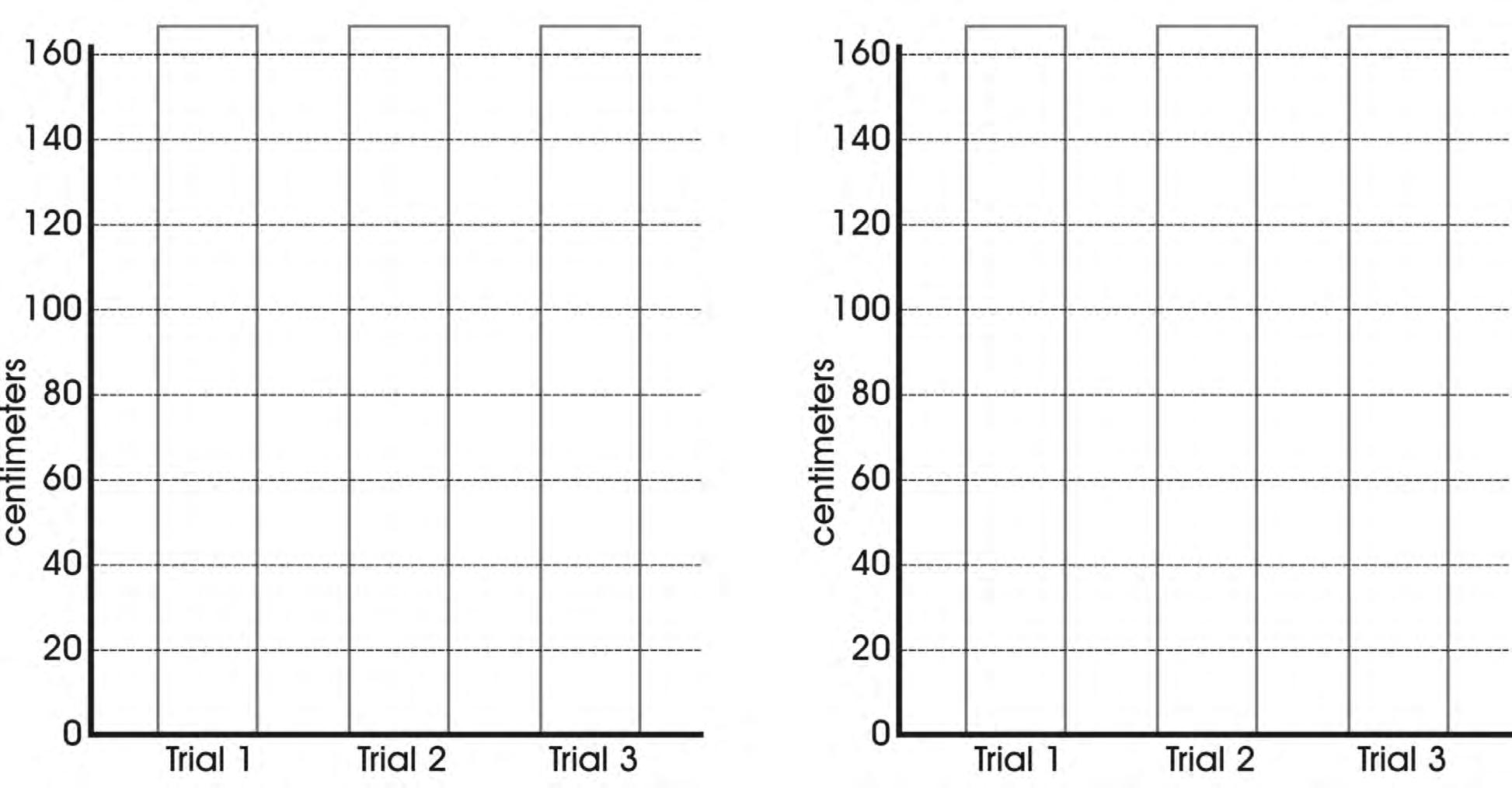
Roll - Sphere A
Roll - Sphere B

Roll - Sphere C
Roll - Sphere D
I see I feel I measure diameter inches centimeters circumference inches centimeters mass grams sink or float
I see I feel I measure diameter inches centimeters circumference inches centimeters
mass grams sink or float
1. Feel both spheres. Which feels warmer?
2. Put both spheres in ice water for 10 seconds. Which sphere feels warmer?
3. Put both spheres in warm water for 10 seconds. Which sphere feels warmer?
4. Which sphere moves heat better?
5. What would you use to protect yourself from heat—plastic or metal?
Draw pictures and use words to explain how water can exist as a solid, liquid, and gas.
the container.
1. Fill the beaker about half full with water.
2. Draw a line on the picture of the beaker to show how much water you put in.
3. How much water is in the beaker? mL
4. Pour the water from the beaker into the graduated cylinder.
5. Draw a line on the picture of the graduated cylinder to show how much water is in it.
6. How much water is in the graduated cylinder? mL
7. Did the water change shape?
8. Did the amount of water stay the same?

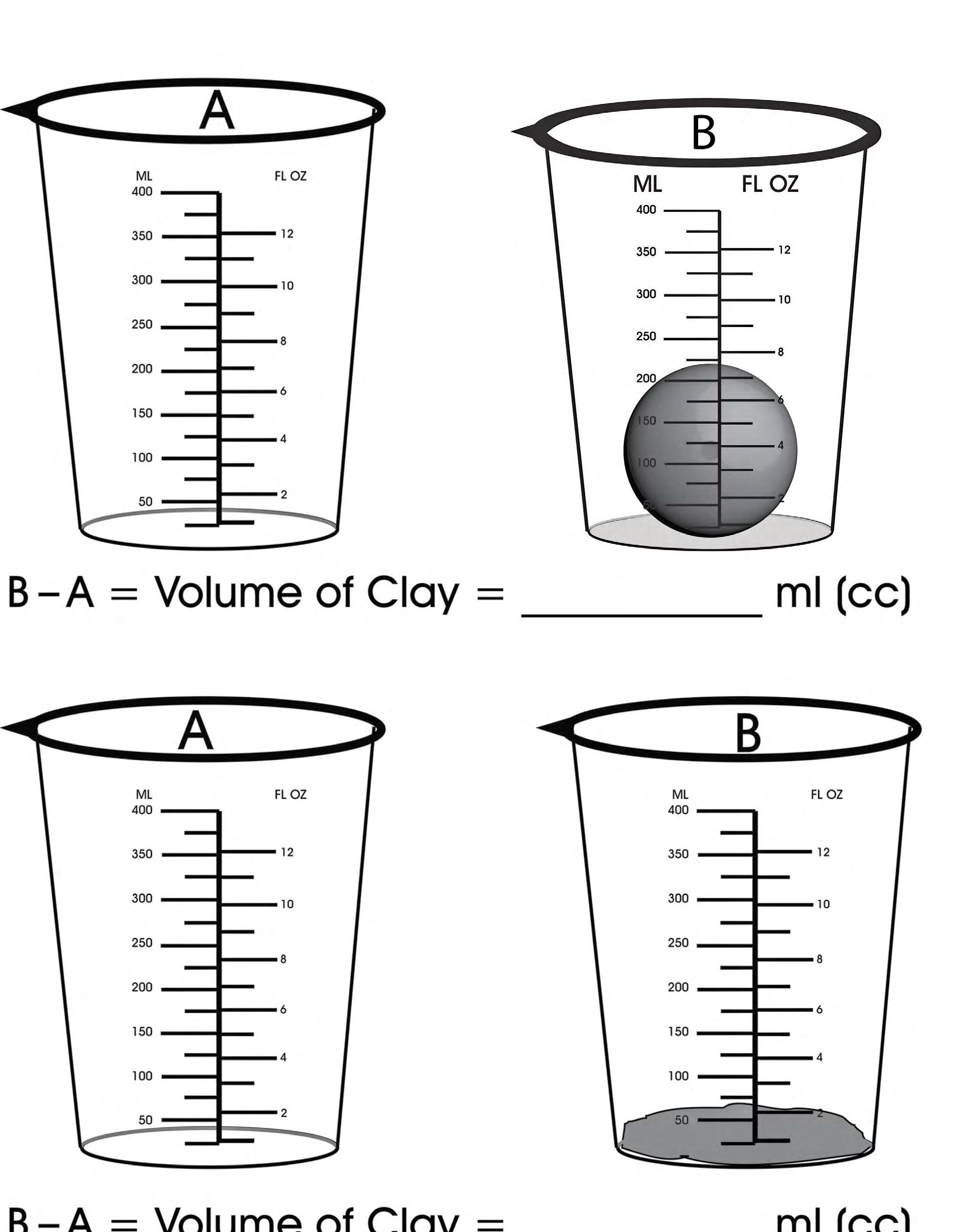
B - A = Volume of Clay = _________ mL (cc)
B - A = Volume of Clay = _________ mL (cc)
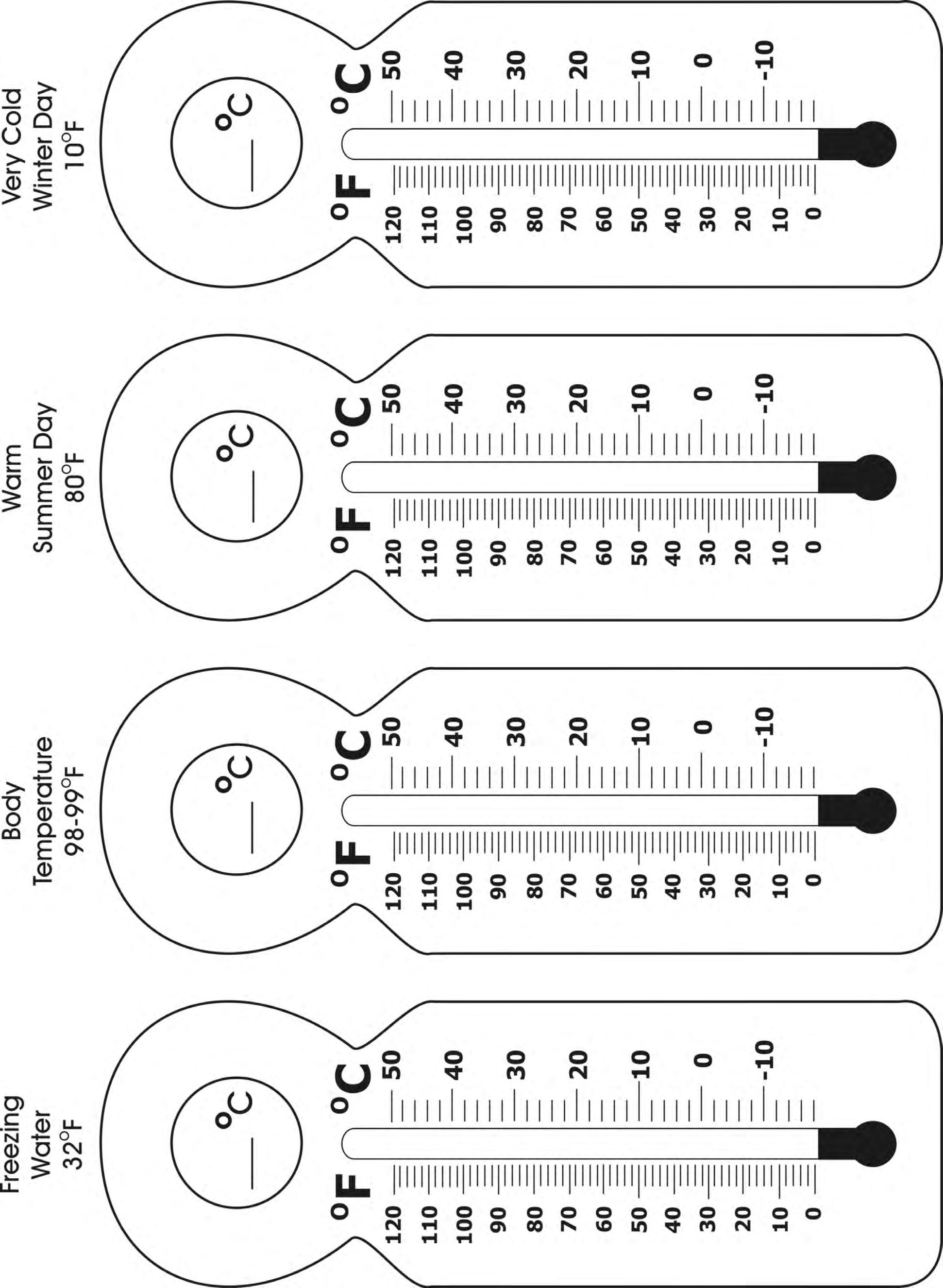
1. Look at the thermometer. Color the tube on Thermometer 1 to show the temperature of the classroom, like this:
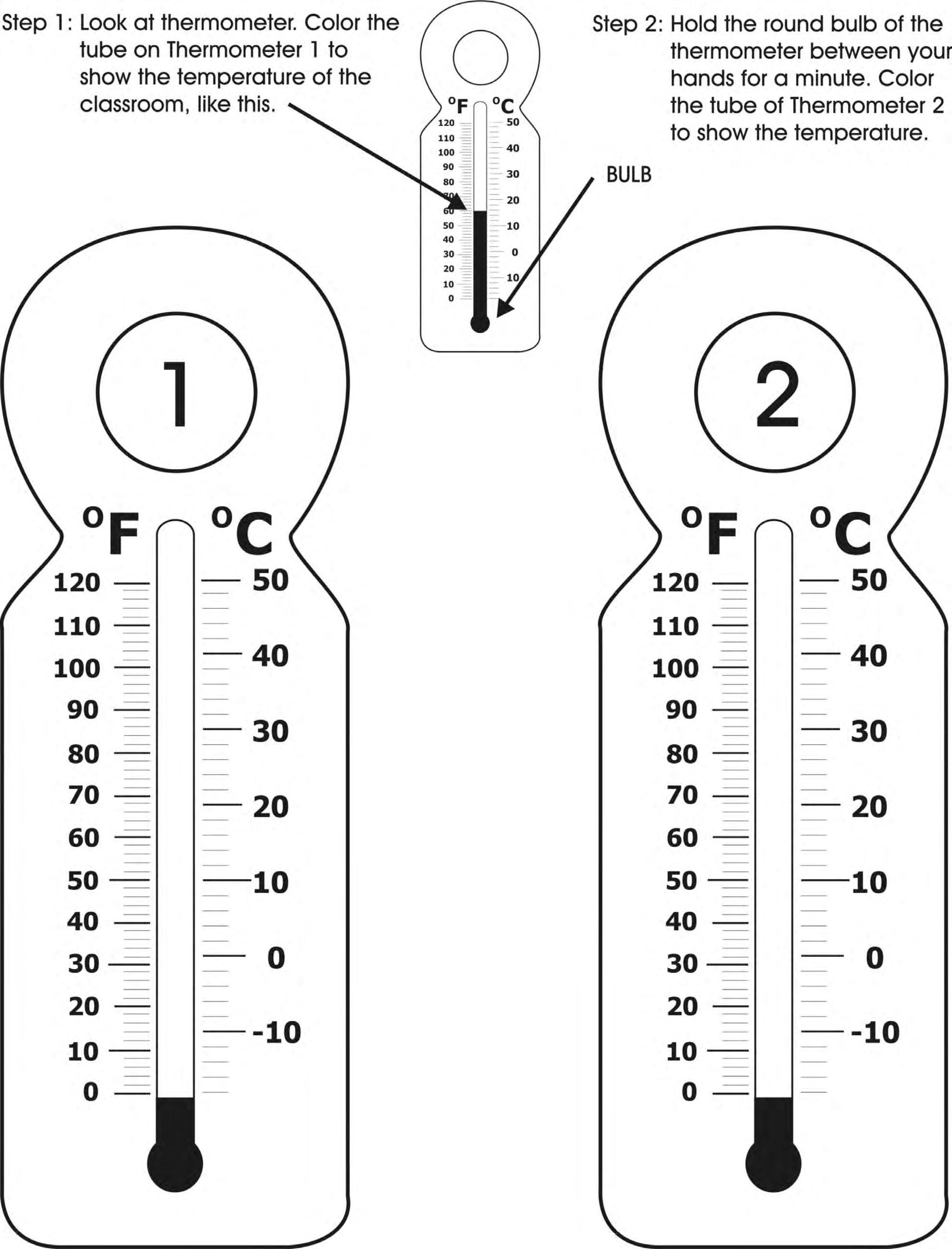
2. Hold the round bulb of the thermometer between your hands for a minute. Color the tube of Thermometer 2 to show the new temperature.
1. Fill one 100 mL beaker with cold water and one 100 mL beaker with warm water.
2. Use the thermometer to measure the temperatures of the water.
3. Color the tubes of Thermometers 1 and 3 to show the temperatures of the water in each beaker.
4. Pour both beakers of water into the 400 mL beaker. DRAW A LINE on Thermometer 2 to show what you think the temperature will be of the mixed water.
5. Use the thermometer to measure the temperature of the water in the large beaker. COLOR the tube of Thermometer 2 to show the temperature of the mixed water. Was your prediction close?
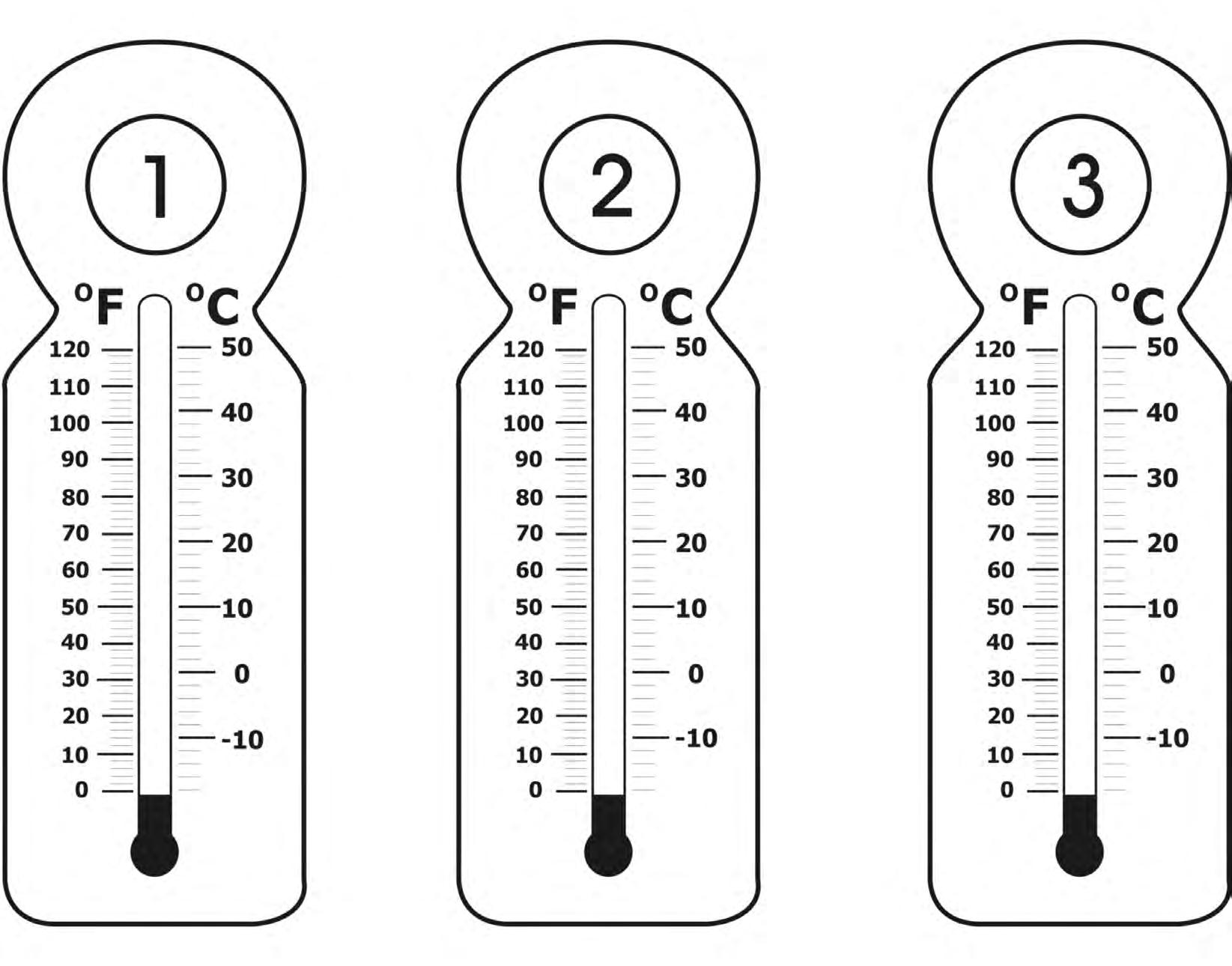
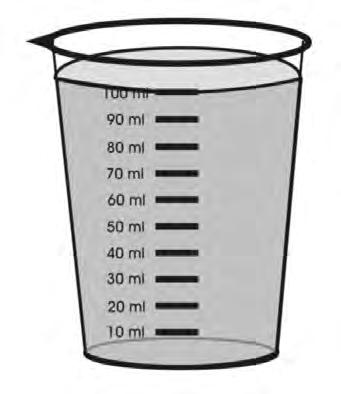
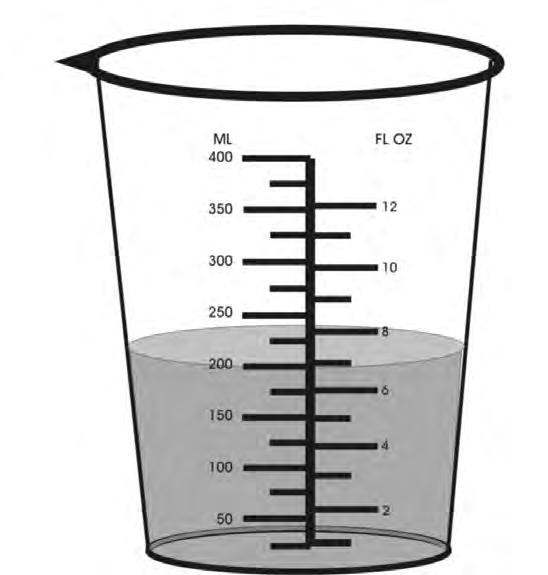

1. Put two thermometers outside in a sunny place.
2. Cover the bulb of one thermometer with black paper. Cover the bulb of one thermometer with white paper.
3. Predict which thermometer will get hotter. Number them 1 and 2, with 1 being hotter.
4. Wait five minutes.
5. Color the tubes of the thermometers to show the temperatures.
6. Record which thermometer is hotter. Number them 1 and 2, with 1 being hotter. Was your prediction correct?
1. Put two thermometers about 18 inches below a bright artificial light.
2. Cover the bulb of one thermometer with black paper. Cover the bulb of one thermometer with white paper.
3. Predict how much the light bulb will raise the temperature compared to the sunlight. Write your predictions in the top box.
4. Wait five minutes.
5. Color the tubes of the thermometers to show the temperatures.
6. Record the temperatures in the bottom box. Compare the temperatures with those in the last activity. How well did you predict?
1. Place the flashlight 25 cm from the wall as shown in Picture 1. Observe the light as it shines on the wall. Describe the light in the space below next to Picture 1.
2. Place a 100 mL beaker filled with water between the flashlight and the wall, about 5 cm from the flashlight, as shown in Picture 2. Observe the light as it shines through the water onto the wall. Does the light look different when it passes through the water? Describe the light in the space below next to Picture 2.
3. Place the magnifying glass in the same place as the beaker, as shown in Picture 3. Observe the light as it shines through the lens onto the wall. Describe the light in the space below next to Picture 3.
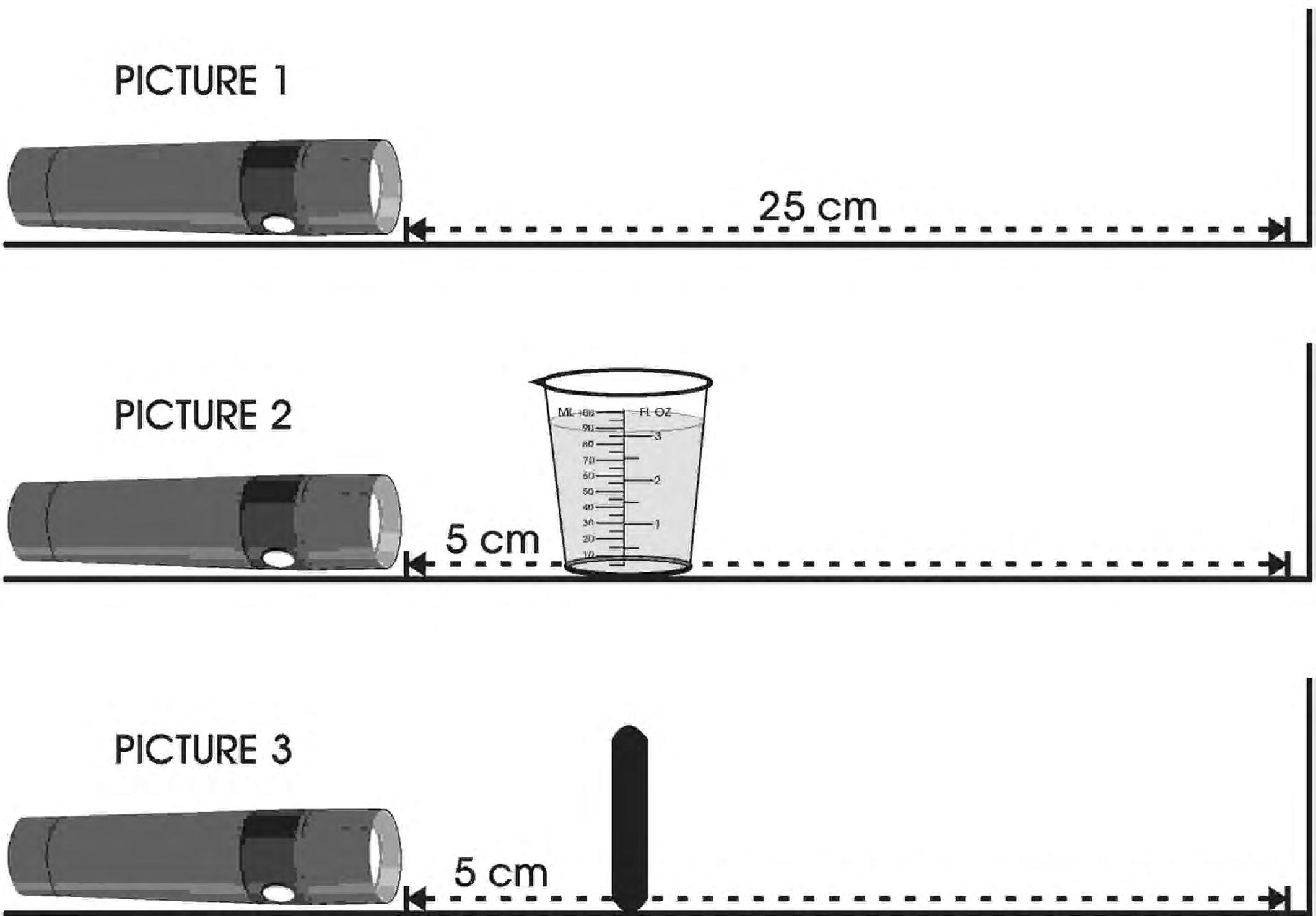
1. Place the flashlight 25 cm from the mirror as shown in Picture 1. Draw an ‘A’ in the box on the left—behind the flashlight—in the place you think you would stand to see the reflection of the light. Now, stand behind the flashlight so that you can see the reflection of the light. Was your prediction correct? Draw a ‘B’ where you actually saw the reflection.
2. Place the flashlight 25 cm from the mirror, shining onto the mirror at an angle, as shown in Picture 2. Draw a ‘C’ in the box behind the picture of the flashlight in the place you can see the reflection. Was your original prediction in step 1 correct for this trial?

1. Look at the two tuning forks. How are they the same? How are they different? Record your observations in the spaces below.
2. Hold the small tuning fork with one hand and strike it with the mallet, as shown in Picture 1. Listen to the sound of the tuning fork and feel its vibration. Strike the tuning fork again and gently touch your cheek in front of your ear.
3. Strike the large tuning fork and observe the sound it makes and how it vibrates. Strike the tuning fork again and gently touch your cheek in front of your ear. Compare the two tuning forks. Record your observations in the space below.
4. Hold a piece of paper in the air by one corner, as shown by the ‘X’ in Picture 2. Strike the small tuning fork with the mallet and touch the paper near the bottom. Observe the sound.
5. Do the same thing with the large tuning fork. Compare the two tuning forks. Record your observations in the space below.
Touching cheek:
Touching paper:
Touching cheek:
Touching paper:
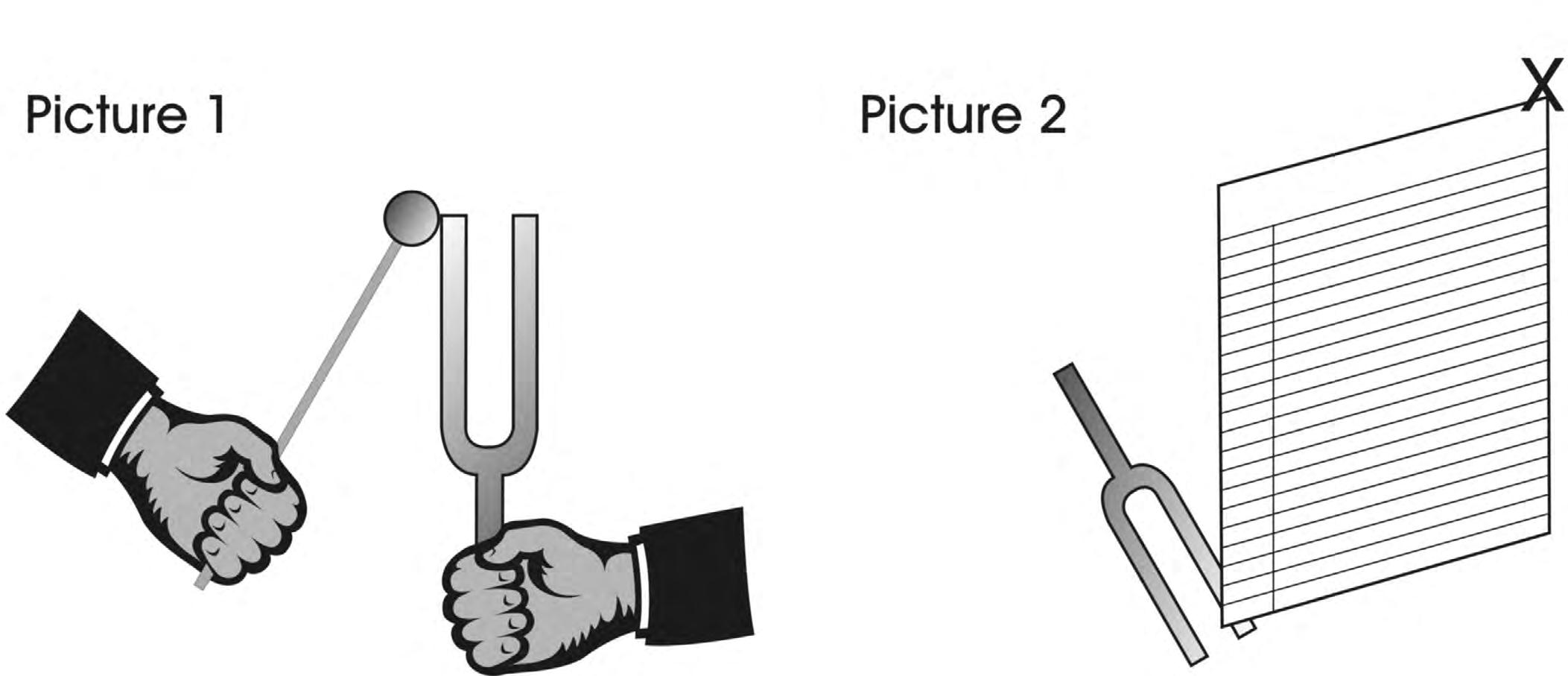
1. Sprinkle a few grains of pepper on the plastic wrap on the top of the can.
2. Strike the small tuning fork and hold it near the pepper without touching it, as shown in the picture. Observe the action of the pepper. Record your observation in the space below.
3. Strike the large tuning fork and hold it near the pepper without touching it. Observe the action of the pepper. Record your observation in the space below.
4. Shake the pepper off the top of the can onto a piece of paper. Sprinkle a few drops of water onto the plastic wrap.
5. Strike the small tuning fork and hold it near the water drops without touching them. Observe the action of the water. Record your observation in the space below.
6. Strike the large tuning fork and hold it near the water drops without touching them. Observe the action of the water. Record your observation in the space below.
7. Gently shake the water off the can.
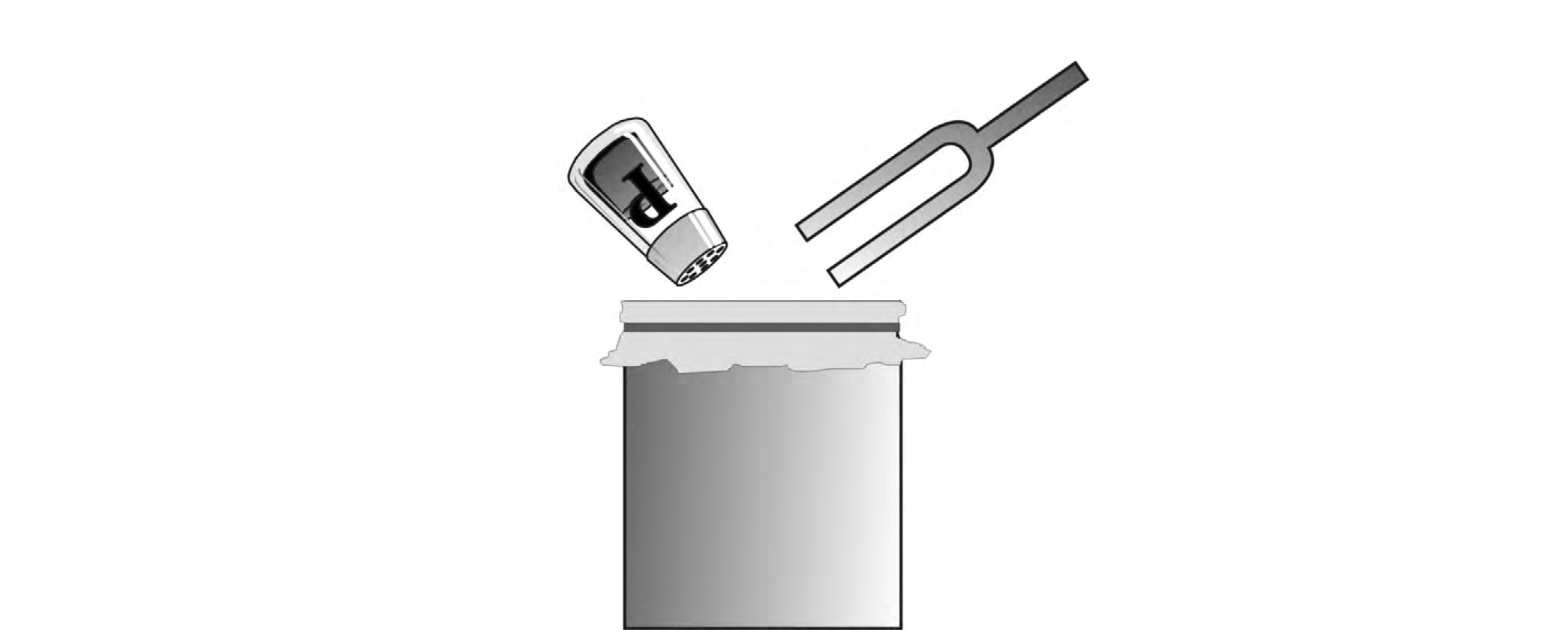
1. Fill the empty can with water. Wait until the water is still.
2. Strike the small tuning fork hard and touch the side of the can very gently. Observe the surface of the water. Record your observation in the space below.
3. Strike the large tuning fork hard and touch the side of the can very gently. Observe the surface of the water. Record your observation in the space below.
4. Strike the small tuning fork hard and touch the surface of the water as shown in the picture. Observe the water. Record your observation in the space below.
5. Strike the large tuning fork hard and touch the surface of the water. Observe the water. Record your observation in the space below.
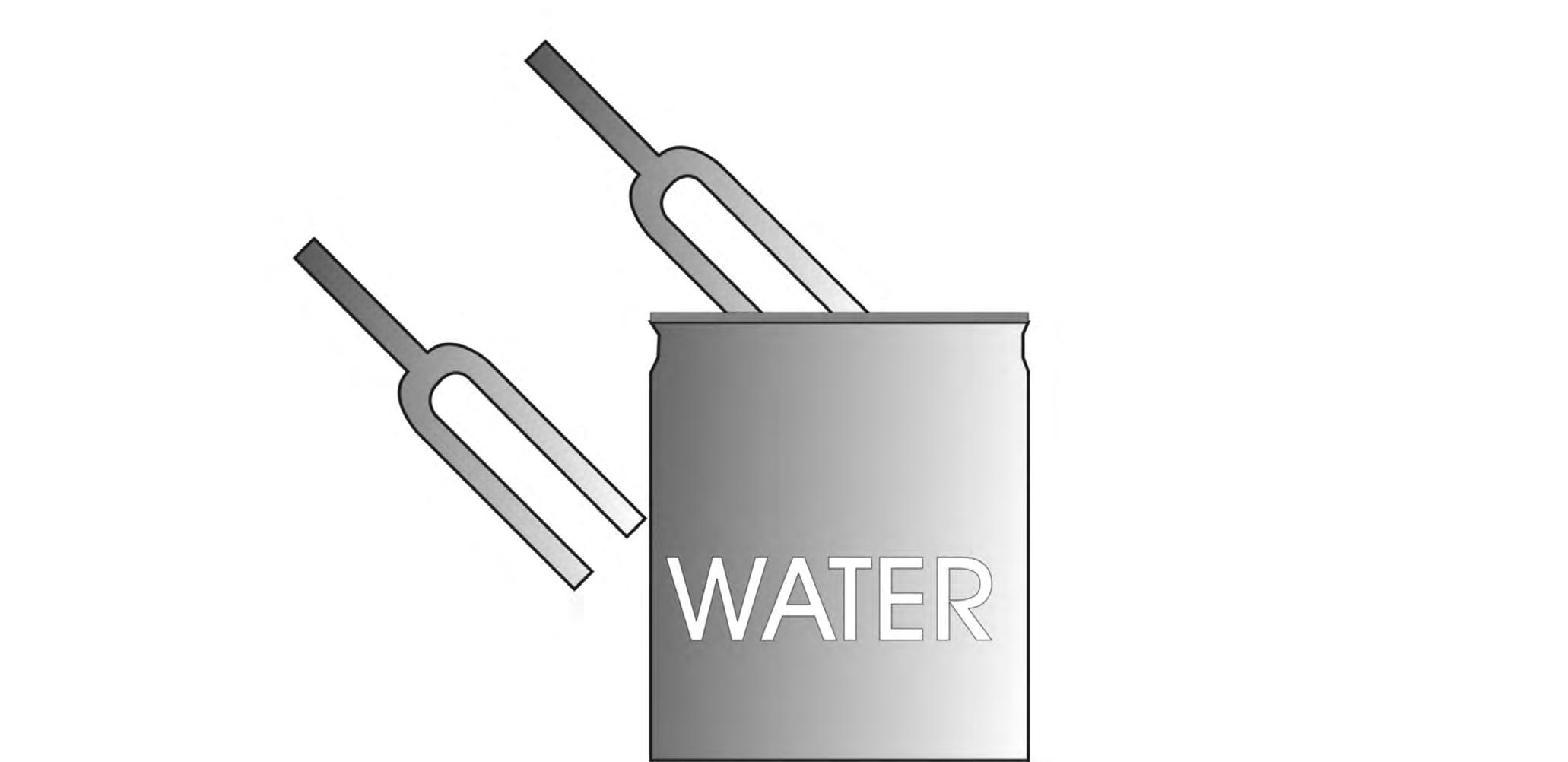
AES
AES Clean Energy Development
American Electric Power Foundation
Appalachian Voices
Arizona Sustainability Alliance
Atlantic City Electric
Avangrid
Baltimore Gas & Electric
Berkshire Gas - Avangrid
BP America Inc
Bob Moran Charitable Giving Fund
Cape Light Compact–Massachusett
Celanese Foundation
Central Alabama Electric Cooperative
CITGO
The City of Cuyahoga Falls
Clean Virginia
CLEAResult
ComEd
Con uence
ConocoPhillips
Constellation
Delmarva Power
Department of Education and Early Childhood
Development - Government of New Brunswick, Canada
Dominion Energy, Inc.
Dominion Energy Charitable Foundation
DonorsChoose
East Baton Rouge Parish Schools
East Kentucky Power Cooperative
EcoCentricNow
EDP Renewables
EduCon Educational Consulting
Elmo Foundation
Enel Green Power North America
EnergizeCT
ENGIE
Entergy
Equinix
Eversource
Exelon
Exelon Foundation
Foundation for Environmental Education
FPL
Generac
Georgia Power
Gerald Harrington, Geologist
Government of Thailand–Energy Ministry
Greater New Orleans STEM
GREEN Charter Schools
Green Power EMC
Guilford County Schools–North Carolina
Honeywell
Illinois Clean Energy Community Foundation
Illinois International Brotherhood of Electrical
Workers Renewable Energy Fund
Independent Petroleum Association of New Mexico
Interstate Natural Gas Association of
America Foundation
Intuit
Iowa Governor’s STEM Advisory CouncilScale Up
Iowa Lakes Community College
Iowa State University
Iron Mountain Data Centers
Kansas Corporation Energy Commission
Kansas Energy Program – K-State Engineering
Extension
Katy Independent School District
Kentucky Environmental Education Council
Kentucky O ce of Energy Policy
Kentucky Power–An AEP Company
Liberty Utilities
Llano Land and Exploration
Louisiana State Energy O ce
Louisiana State University – Agricultural Center
LUMA
Marshall University
Mass Save
Mercedes Benz USA
Minneapolis Public Schools
Mississippi Development Authority–Energy Division
Motus Experiential
National Fuel
National Grid
National Hydropower Association
National Ocean Industries Association
National Renewable Energy Laboratory
NC Green Power
Nebraskans for Solar
NextEra Energy Resources
Nicor Gas
NCi – Northeast Construction
North Shore Gas
O shore Technology Conference
Ohio Energy Project
Oklahoma Gas and Electric Energy Corporation
Omaha Public Power District
Ormat
Paci c Gas and Electric Company
PECO
Peoples Gas
Pepco
Performance Services, Inc.
Permian Basin Petroleum Museum
Phillips 66
PowerSouth Energy Cooperative
PPG
Prince George’s County O ce of Human
Resource Management (MD)
Prince George’s County O ce of Sustainable Energy (MD)
Providence Public Schools
Public Service of Oklahoma - AEP
Quarto Publishing Group
The Rapha Foundation
Renewable Energy Alaska Project
Rhoades Energy
Rhode Island O ce of Energy Resources
Salal Foundation/Salal Credit Union
Salt River Project
Salt River Rural Electric Cooperative
Schneider Electric
C.T. Seaver Trust
Secure Solar Futures, LLC
Shell USA, Inc.
SMUD
Society of Petroleum Engineers
South Carolina Energy O ce
Southern Company Gas
Snohomish County PUD
SunTribe Solar
TXU Energy
United Way of Greater Philadelphia and Southern New Jersey
United Illuminating Unitil
University of Iowa
University of Louisville
University of North Carolina
University of Northern Iowa
University of Rhode Island
U.S. Department of Energy
U.S. Department of Energy–O ce of Energy
E ciency and Renewable Energy
U.S. Department of Energy - Solar Decathlon
U.S. Department of Energy - Water Power
Technologies O ce
U.S. Department of Energy–Wind for Schools
U.S. Energy Information Administration
United States Virgin Islands Energy O ce
Vineyard Wind
Virginia Cooperative Extension
Virginia Natural Gas
Vistra Energy
We Care Solar
West Virginia O ce of Energy
West Warwick Public Schools
Williams